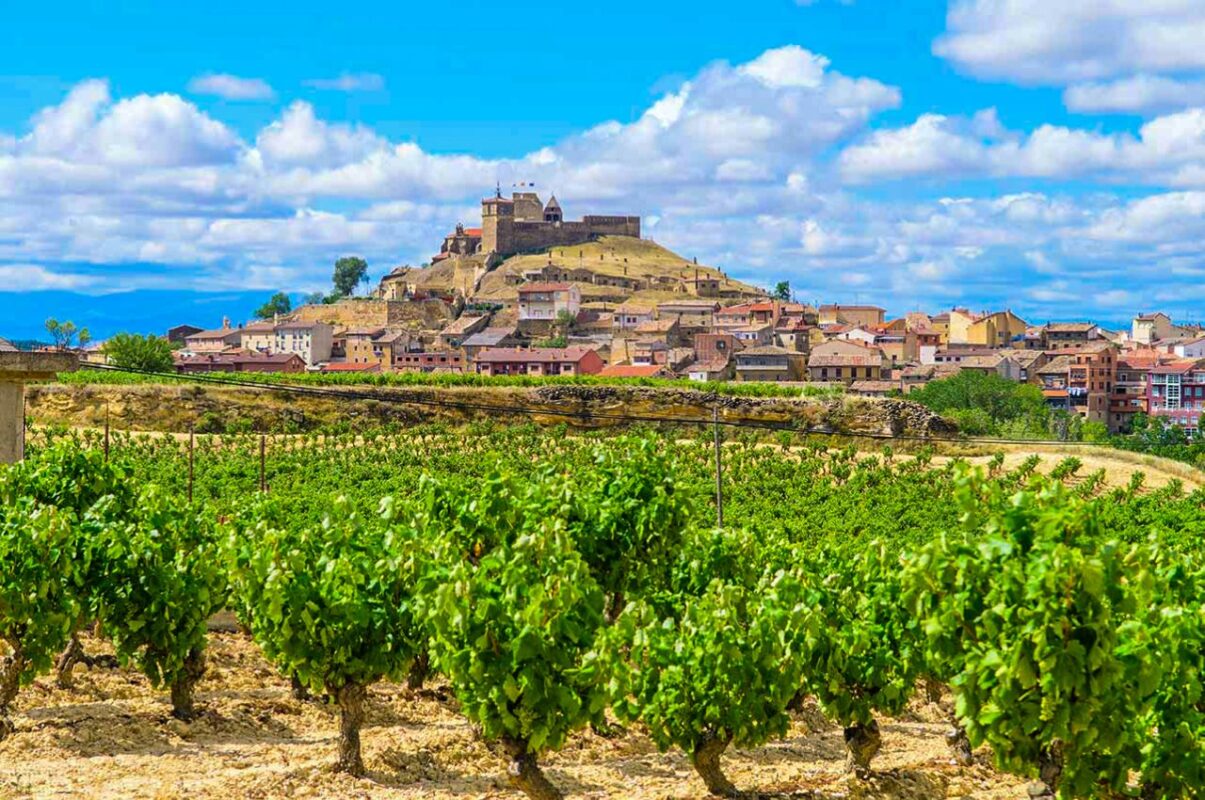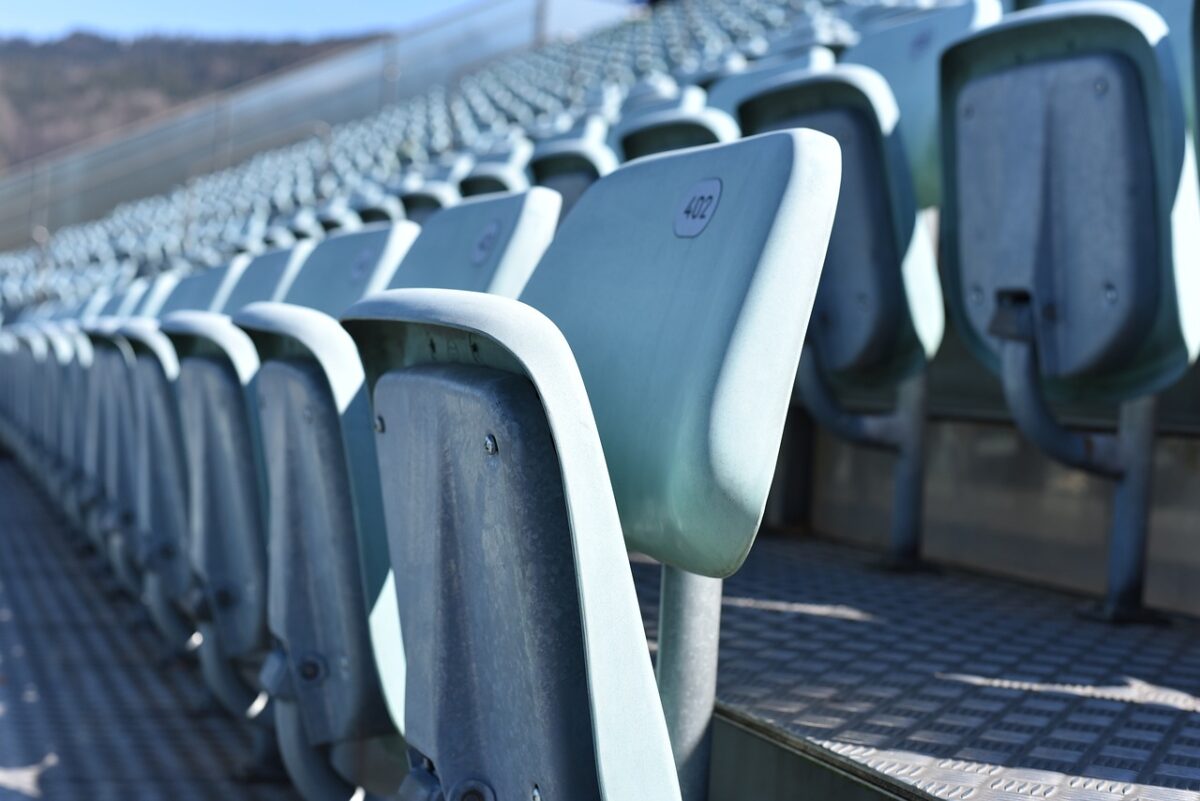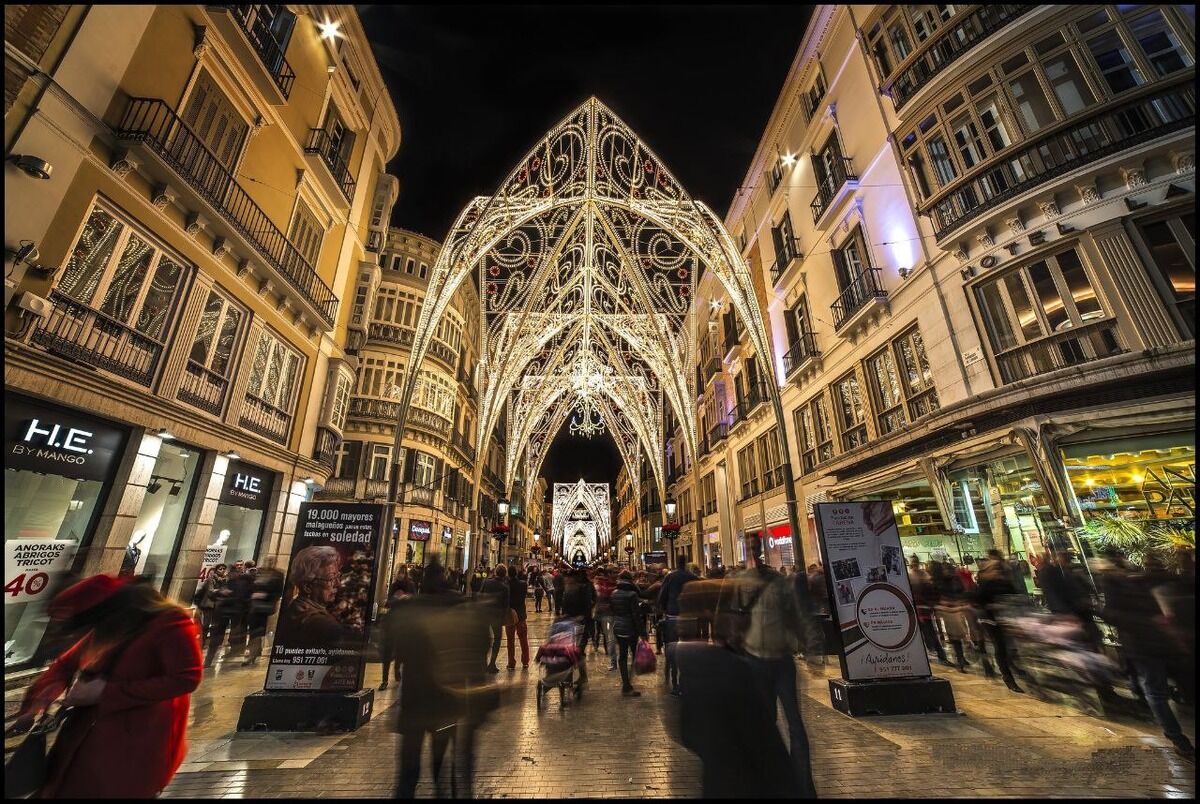Things to do in Rioja — routes, trails, attractions
![]()
La Rioja is well known as a wine region, but don’t limit yourself to just visiting wineries and vineyards. There is plenty to do on its fertile land besides wine tourism. With a rich historical and cultural heritage, this region contains attractions that reveal new, unexplored facets of Spain.
Rioja has picturesque countryside that is ideal for cycling and hiking. Many hotels here offer bicycle rentals, providing great opportunities to explore the area. And if you are one of those tourists who prefer to travel by car, then we will tell you where to go in Rioja, Spain to visit the most interesting things.
We bring you the best activities and itineraries in La Rioja. Choose your preferred mode of travel (walk, bike, or car) and hit the road for new experiences and experiences. After all, in the end, they are the only thing that stays with us forever.
Compete in tapas bars on Calle Laurel
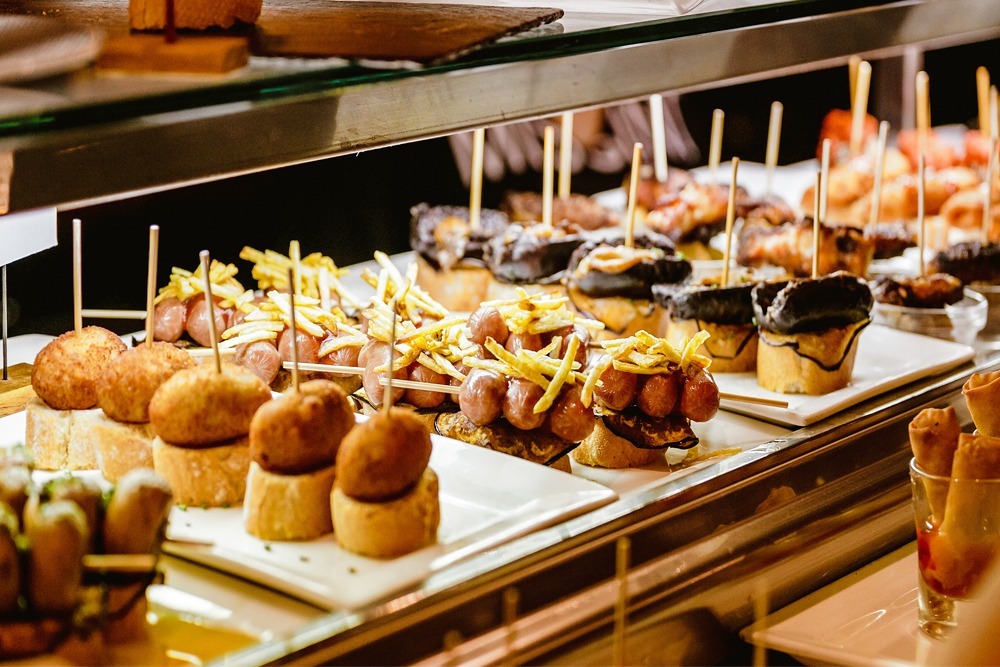
Every Spanish city has its places of worship. In Seville — Plaza de España, and in Rioja — Calle Laurel. This is a street in Logrono with many tapas bars. They serve miniature pintxos — a small piece of bread with a snack attached to it with a cocktail stick. The name pintxos comes from the Spanish verb pinchar, which means to pierce. If you haven’t picked up the baton from other tourists and hopped from one tapas bar to another, you’ve missed out on the fun part.
Get to know the main cities of La Rioja — Logrono and Haro
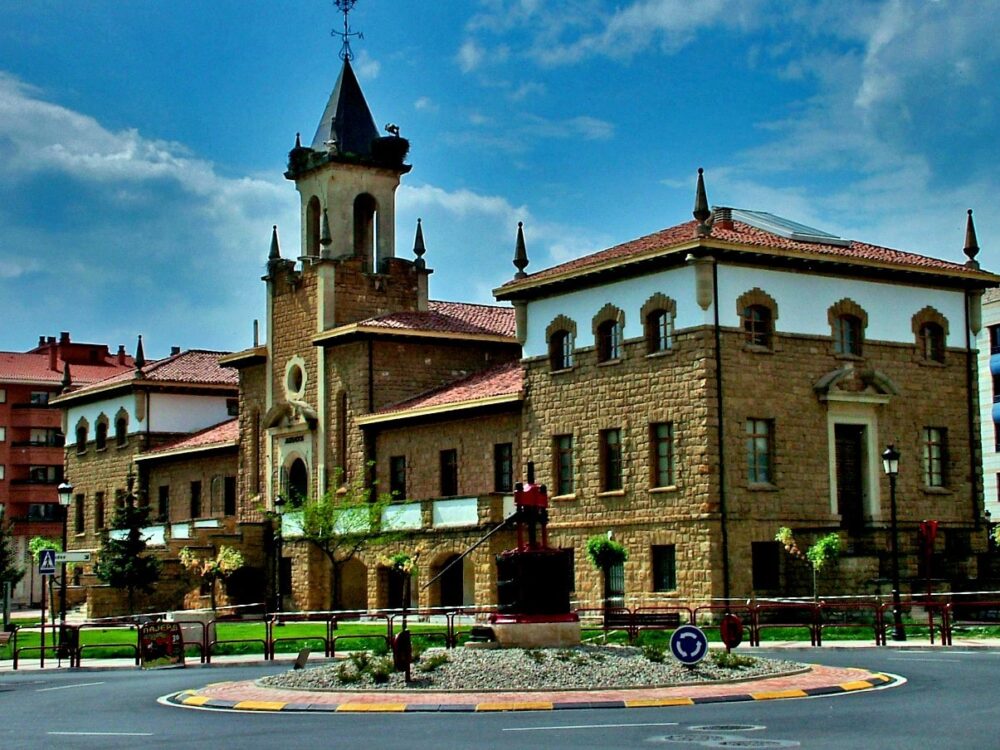
Logrono is the capital of La Rioja and the best starting point for traveling around the region. It is worth spending some time in this medieval city strolling through its ancient streets. Especially along the route of St. James (we talk about it in detail below). One of the must-do activities here is visiting the local restaurants to get acquainted with Riojan cuisine and taste the famous Tempranillo wines. And most importantly, have fun on Calle Laurel.
Haro is a small, atmospheric town considered Rioja’s wine capital. Tourists come here to visit its famous winery district, which has grown up next to the train station. Here you can buy a tour of the cellar with tasting or go straight to the bar at the winery — many do just that.
Visit the thermal springs of La Rioja
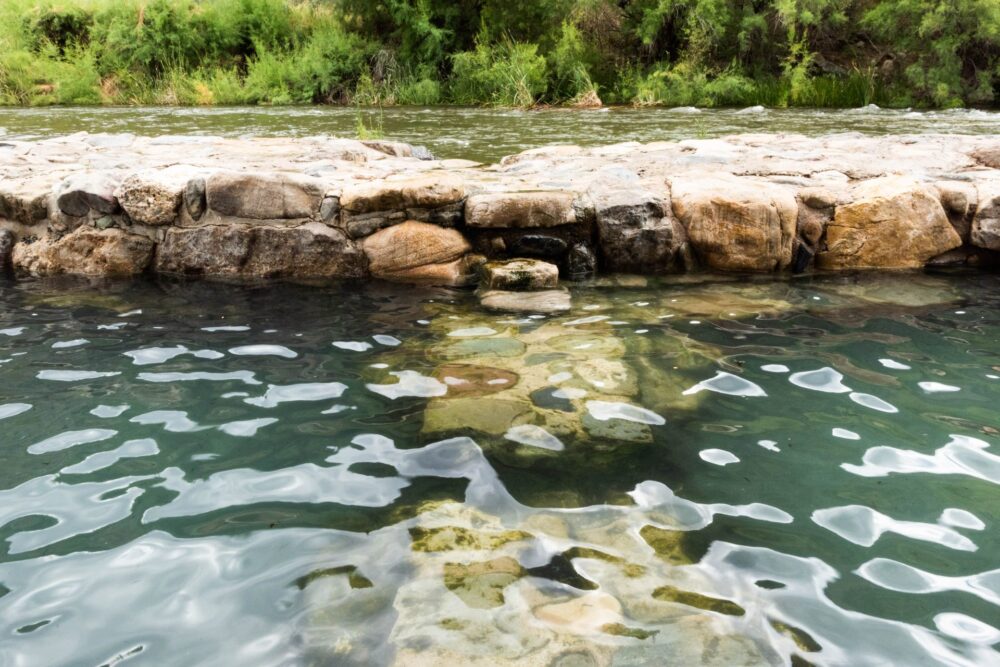
Some of the best places to visit in La Rioja include its thermal springs. In this wine-growing region’s heart are balneological resorts and several open-air swimming pools. These places have been known since the times of the Roman Empire and are worthy of a special visit by travelers. In ancient times, the Celts, Romans, and Arabs recuperated here, and now the thermal springs are a famous attraction of the region.
The peak tourist season is in the summer. However, it is better to come here in the off-season or even in winter. You’ll enjoy hot water more when it’s cool outside.
Important information: When visiting thermal springs, be prudent and do not stay in hot water for more than 15-20 minutes — a long stay causes increased stress on the heart and circulatory system. It is recommended to stay in thermal water no more than 2 hours a day with an 8-hour break. Keep in mind that air enriched with minerals also has effects on the body.
Arnedillo
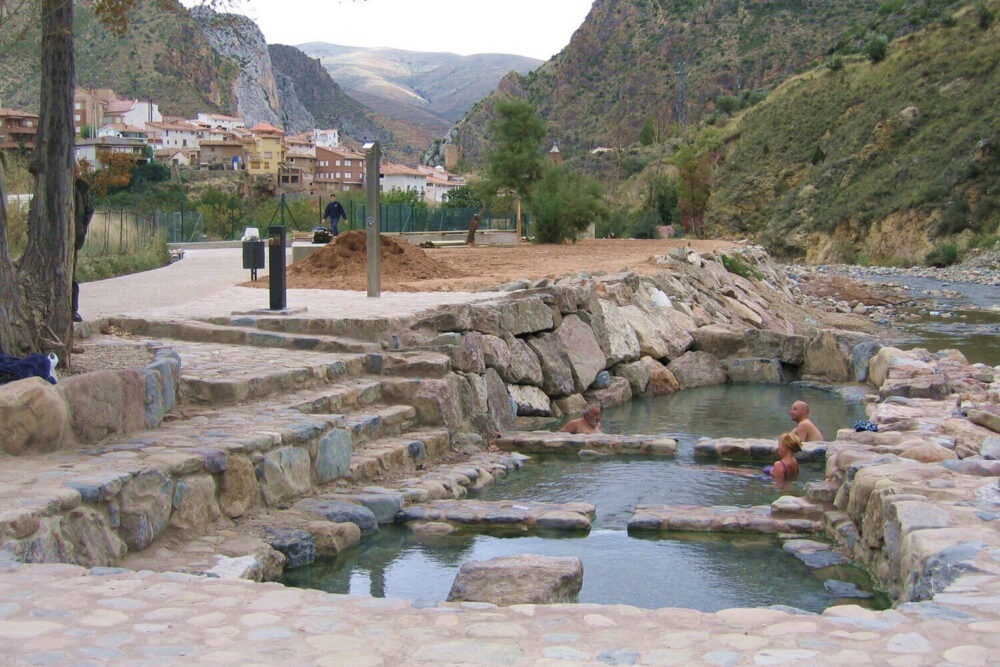
Arnedillo is the best location in Rioja to visit the thermal springs, located on the banks of the Sidacos River, surrounded by hills and vineyards. These are free open springs and pools that can be used daily from 06:00 a.m. to midnight at any time of the year. The water temperature in them is from 20 oC to 48 oC.
These thermal waters are classified as chlorinated sodium, sulfated calcium, and brominated, with ions of magnesium, iron, silicon, and rubidium. They are recommended for rheumatism, respiratory diseases, contractures, bruises, and stress. The Balneario de Arnedillo spa center is also located here, offering a wide range of wellness, beauty, relaxation, and treatments, including hydrotherapy and mud therapy. In addition, it has a hotel and a restaurant.
Good to know: Arnedillo is located 60 kilometers from Logroño — a drive through the picturesque area will give you real pleasure. There are several small hotels in the village. Among them is the cozy La Fuente de Arnedillo, which is located near the river. Travelers also have free parking at their disposal. But parking near the thermal springs is paid for, although its cost is quite reasonable. There are also rest areas, showers, and drinking water nearby, but no toilets. There are several bars and restaurants nearby.
Gravalos
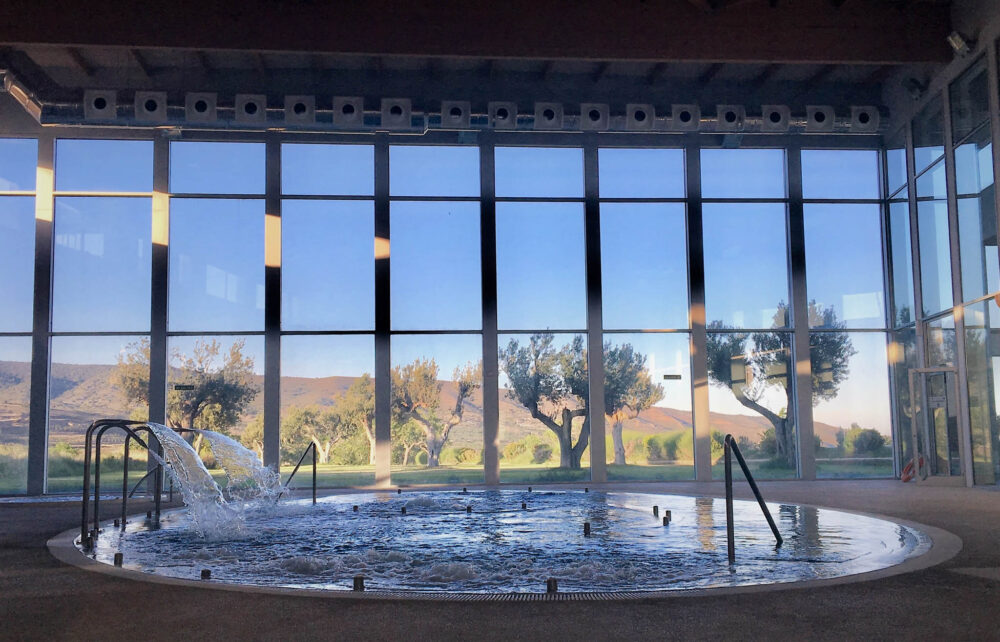
Gravalos (Balneario de Grávalos) is a balneological resort 33 kilometers from Arnedillo. It is located in a picturesque valley surrounded by vineyards and almond trees. Its thermal area boasts a Roman-Irish outline with a huge window and beautiful, relaxing views of the olive garden.
Local waters are especially useful for rheumatism and skin diseases. They relieve pain and stop degenerative processes. They offer a variety of wellness and additional treatments, including Scottish showers, aero massage baths, Vichy massage, body wraps, lymphatic drainage, and more.
Take a trip along the Cloisters of La Rioja route
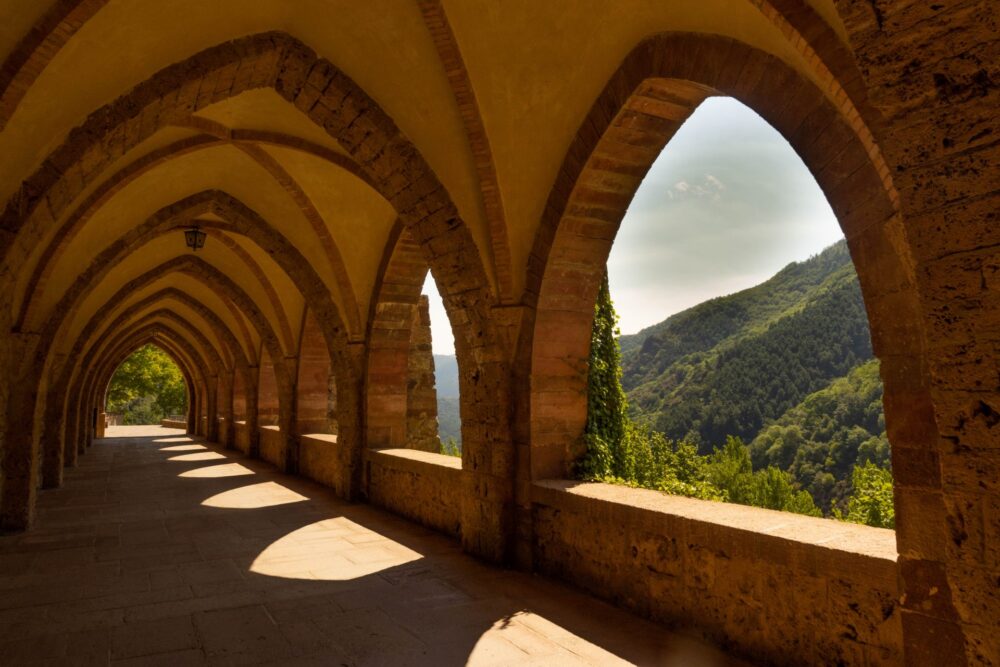
Discover ancient monasteries. This is a great idea of what to do in Rioja, as the region has a rich historical and cultural heritage. The 88-kilometer route can be covered by bicycle or car. This experience will give you a wonderful experience and allow you to immerse yourself in the medieval atmosphere.
- The Monastery of Our Lady of Valvanera in Anguiano was built on the site of an old temple in the 15th century. The monastery is located in a picturesque valley with an abundance of springs, waterfalls, and streams. The distance from here to the next destination is 19 kilometers.
- The Monasteries of San Millan de la Cogolla or Yuso and Suso Monasteries are UNESCO World Heritage Sites. This is the main historical and cultural value of the region and a center of pilgrimage. The distance from here to the next point on the route is 28.5 kilometers.
- The Monastery of Santa Maria de San Salvador de Canas in the city of Cañas. Its construction began in the 13th century and lasted several centuries. In 1943, the complex of monastic buildings was declared a national monument. A valuable collection of relics is kept here. Carmelite nuns bake delicious cakes and sweets. The distance to the next point on the route is 41 kilometers.
- The Monastery of Santo Domingo de la Calzada in the village of the same name is a religious building, richly decorated with paintings and sculptures. The monastery is a key site on the Way of St. James route. The distance to the next destination is 56 kilometers.
- The Monastery of Santa Maria de la Piedad is the cultural jewel of La Rioja. It is located in the town of Casalarreine, in the vicinity of Haro. The monastery was built in the Gothic-Renaissance style between 1514 and 1524. The distance from here to the next point on the route is 73 kilometers.
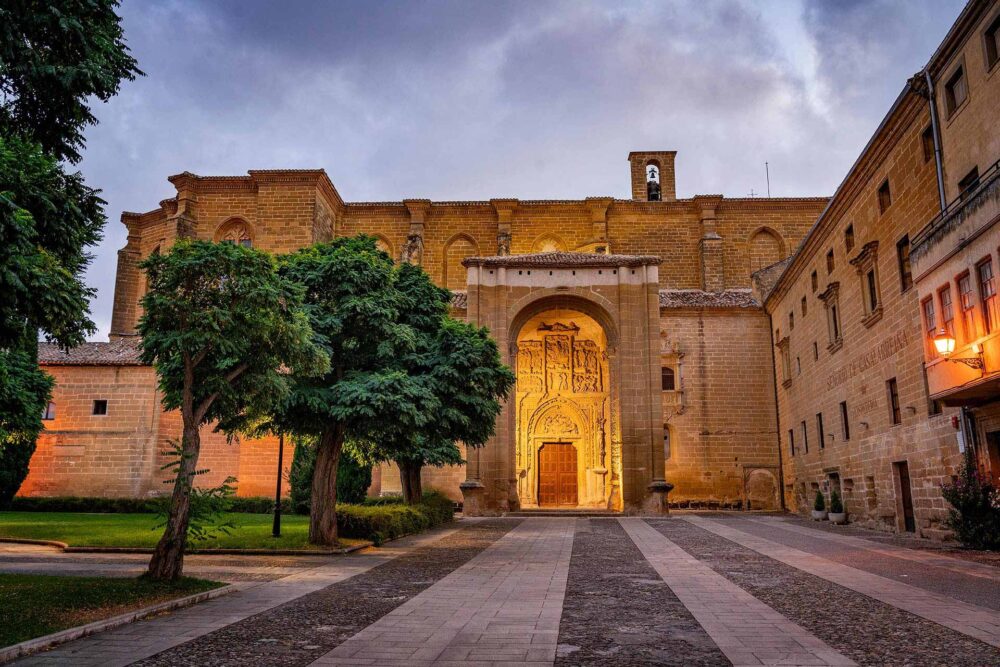
- The Monastery of Santa Maria de la Estrella (Monasterio de Santa María de la Estrella) in the city of San Asensio (12 kilometers from Haro). Its construction began in 1419 and continued until the mid-20th century. This complex of buildings combines architectural elements of previous buildings in the late Gothic style and more modern ones in the Neo-Gothic style. The monastery has a very pleasant, peaceful atmosphere, and the monks sell excellent wine. The distance to the next point on the route is 87 kilometers.
- The Monastery of Saint Helena (Monasterio Santa Elena (Clarisas de Nájera)) in Najera. It is located on the road to Santiago and was founded in the 16th century by Doña Aldonza Manrique de Lara, daughter of the Duke of Najer. The building attracts with the beauty of its facade and interior decoration. It can be visited daily from 08:30 a.m. to 01:00 p.m. and from 03:30 p.m. to 08:00 p.m. The next point on the route is also in Najera.
- The Monastery of Santa María la Real of Nájera in Najera is an important destination on the Way of Saint James. It was founded in 1052 by King García Sánchez III after he found a sculpture of the Virgin Mary in a cave while falconry. Later the cave was integrated into the temple. The current monastery church dates from 1516. This ancient structure is famous for its extraordinary beauty and especially for the woodwork in the church choir.
Route map the Cloisters of La Rioja
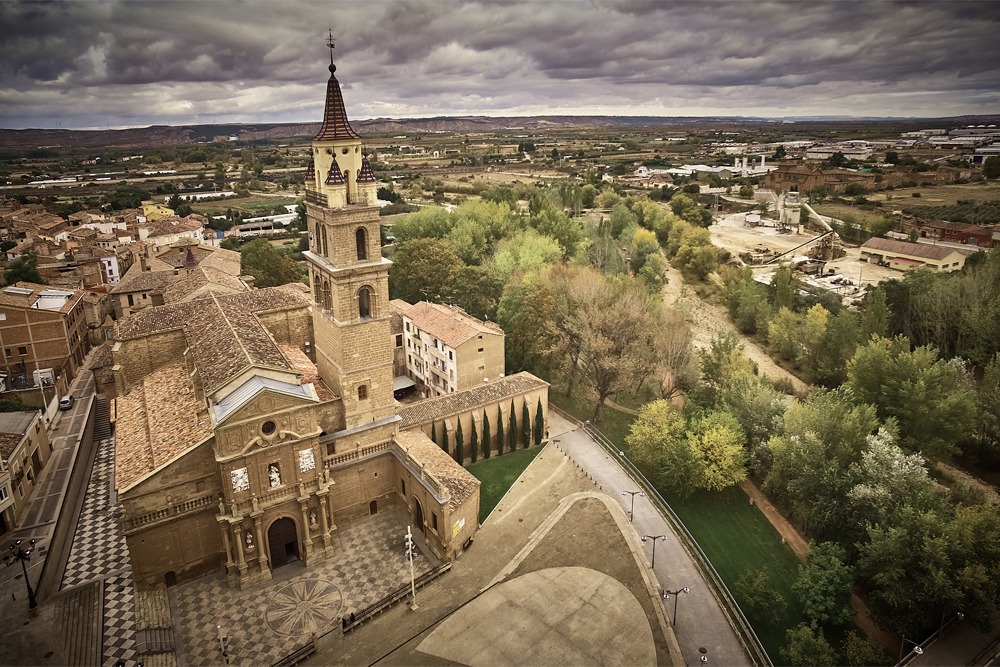
Additionally, you can visit the Monastery of San José (Monasterio de San José) in Calahorra. However, it should be borne in mind that it is located off the route — 164 kilometers from Najera and 48 kilometers from Logroño. The Monastery of San José was founded in 1598 by the Discalced Nuns of the Order of Our Lady of Mount Carmel. The building has remarkable architecture and interiors. The work Christ at the Column by Gregorio Fernandez is worthy of special attention. There is a hotel with a well-kept courtyard. And the Carmelite nuns prepare delicious sweets and pastries.
Visit Rioja wineries and experience the atmosphere of winemaking
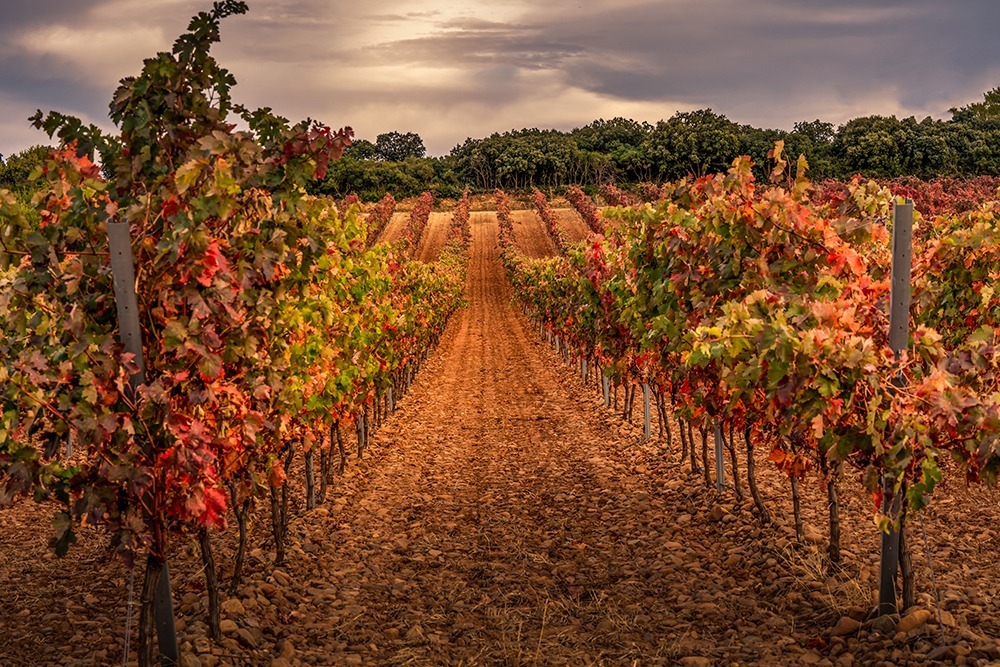
Wine tasting at a winery is one of the best things to do in Rioja, Spain. This picturesque region is home to the largest number of wineries. Some of them are historical, preserving the atmosphere of bygone centuries, others are modern and stylish. There are large enterprises and cozy family ones. In addition to tastings and visits to their cellars, they offer unique services — a walk and picnic in the vineyards, a theatrical tour, a hot air balloon flight over the vineyard, a multi-sensory experience, and much more.
Without a doubt, visiting a winery in Rioja is an unforgettable experience. We talk more about this in another article that you should read.
Read also: The best wineries and vineyards of Rioja — excursions and wine tasting
Take the Castles of Rioja route
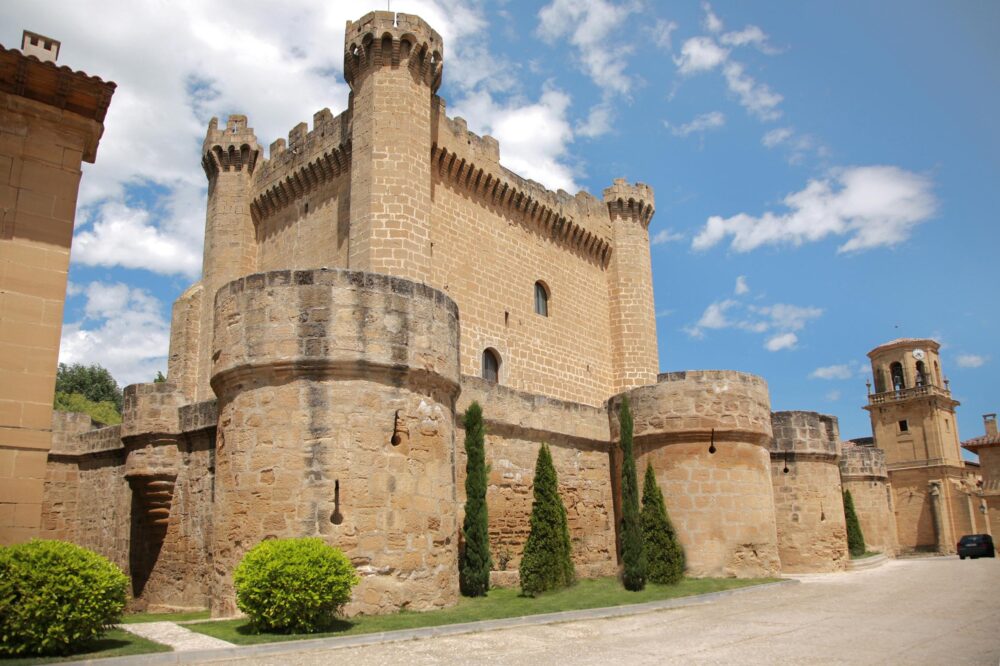
In La Rioja, you can see the living history of the Middle Ages — ancient castles. Some of them barely retained their walls, while others are privately owned and very well maintained.
The route through the castles of La Rioja has a length of 196 kilometers and passes through picturesque terrain. Driving this distance by car will not be difficult. It is worth noting that such a trip is one of the best things to do in Rioja, which will bring pleasure and give a new experience.
- Sajazarra Castle (Castillo de Sajazarra) is privately owned, located in the city of the same name, and is well preserved. It was built in the 14th and 15th centuries and, together with the castles of Briones and Davalillo, formed the border between the kingdoms of Castile and Navarre. Access to the architectural monument is from the city center, near the parish church. The distance to the next castle on the route is 20 kilometers.
- Briones Castle (Castillo de Briones) is located in the city of the same name. It was erected in the 13th century. Be sure to visit its observation deck. The views of the surrounding area are undoubtedly worthy of attention. The distance to the next point on the route is 26.5 kilometers.
- Davalillo Castle (Davalillo Castillo) dates back to the 14th century. It is located north of the city of San Asensio, on a hilltop above the Ebro River. This is a picturesque place with a stunning view of the valley. The distance to the next castle on the route is 36 kilometers.
- Torrefuerte de Torremontalbo Castle (Castillo Torrefuerte de Torremontalbo) is located in Torremontalbo, in the province of Logroño, next to the Najerilla River. You can get here via the N-232 highway. The first mention of it dates back to 1096. Currently, the building is in good condition. The distance to the next castle on the route is 44 kilometers (the toll section of the AP-68 road can be avoided by taking the N-232).
- Clavijo Castle (Castillo de Clavijo) in La Rioja is one of the most famous, it is decorated with the cross of Santiago. The castle was built on top of a cliff with beautiful views. The first information about it dates back to 960. The architectural landmark is located 15 kilometers from Logrono and is an excellent location for photos. The distance to the next castle on the route is 25 kilometers (with deviations along the way).
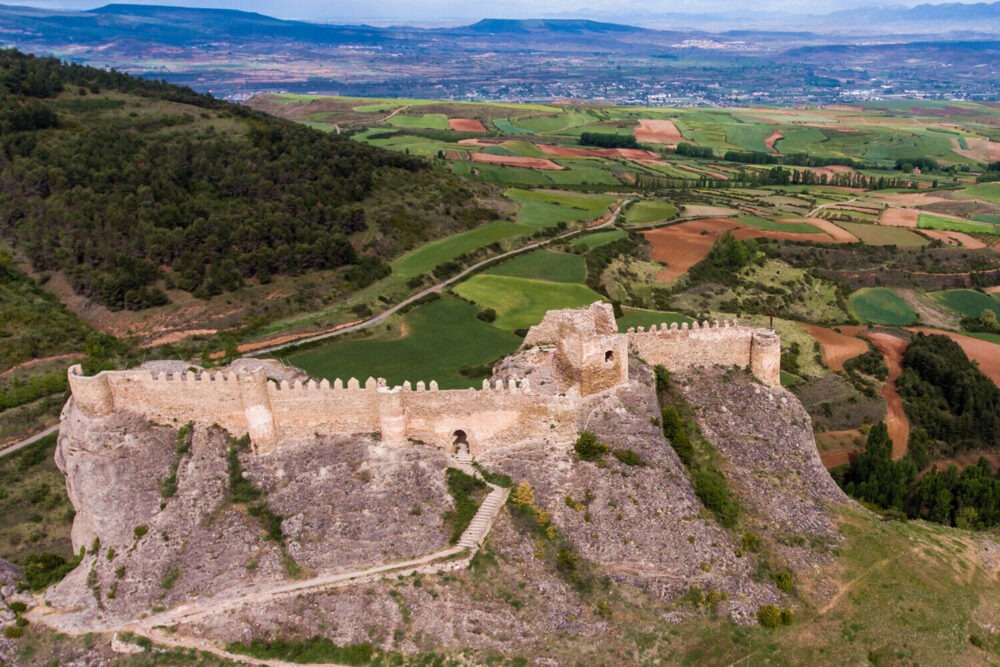
- Aguas Mansas Castle (Castillo de Aguas Mansas) is a medieval building in the center of Agoncillo. It was built in the XIII-XIV centuries and restored in 1990. The castle is in good condition. It was declared a National Historic Art Landmark in 1983. The distance to the next point on the route is 48 kilometers (there are toll sections of the road).
- Arnedillo Castle (Castillo de Arnedillo) stands on the right bank of the Sidacos River, in the city of Arnedillo, which is famous for its thermal springs. The first historical information about the castle dates back to the beginning of the 11th century. Its fort tower and wall in the mountain have survived to this day. The distance to the next point on the route is 13.9 kilometers.
- Arnedo Castle (Castillo de Arnedo) is located in the village of the same name. It is of Muslim origin and was built in the 9th century on Roman ruins. It offers views of the city and the Sidakos River. The distance to the next castle on the route is 6 kilometers.
- The Castle of Quel is located in the village of the same name and stands on the top of a hill, from where the castles of Arnedo and Autol are visible. It was erected in 1470 and now consists of a main tower and a wall. The distance to the next castle on the route is 29.4 kilometers.
- Castle Cornago was built in the XIV-XV centuries and is located on the top of the mountain, offering a beautiful view of the city of Cornago. Booking is required to tour the castle.
Rioja Castles route map
Discover prehistory and follow the Dinosaur Trail
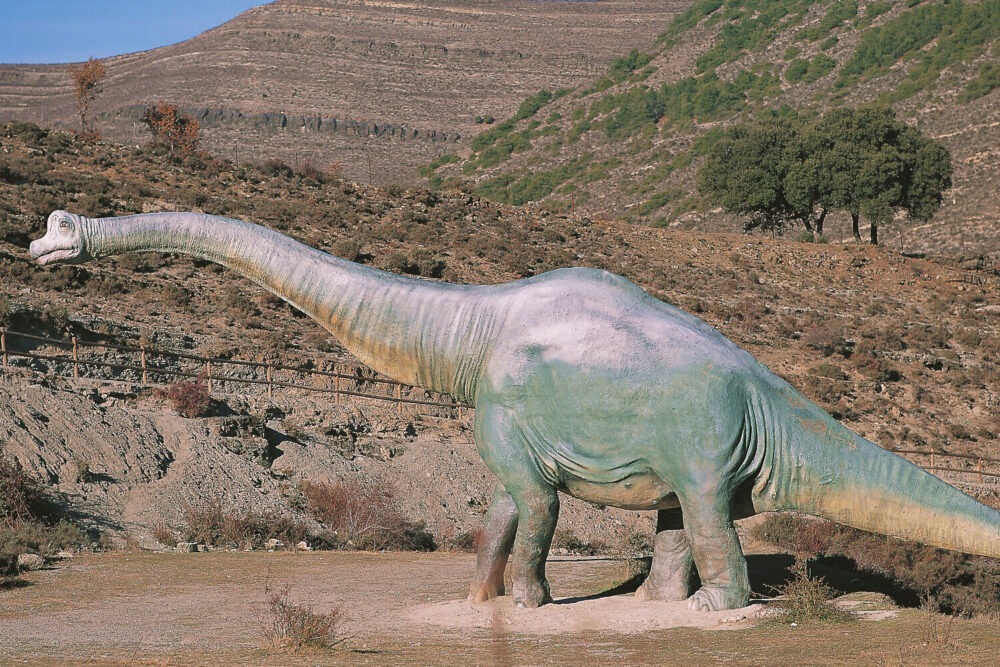
If you don’t have things to do in Rioja, Spain, follow the Dinosaur Trail to see their real fossilized footprints — ichnites. Millions of years ago, there was a swampy landscape where ancient giants lived on the territory of the modern settlement of Enciso. This is a unique place where the largest number of dinosaur tracks in the world have been found and recorded. There are also life-size reptile statues that will delight your kids.
The best place to go on an adventure is from the Paleontological Center of Enciso in Enciso. Here you can pick up a map with explanations and rent an ATV if you don’t like walking.
There are several developed routes with traces of different dinosaurs. We will describe the most interesting ones that are easy to get to on your own. To reach them, you should cross the bridge over the Sidacos River in Enciso.
Yacimiento La Virgen del Campo
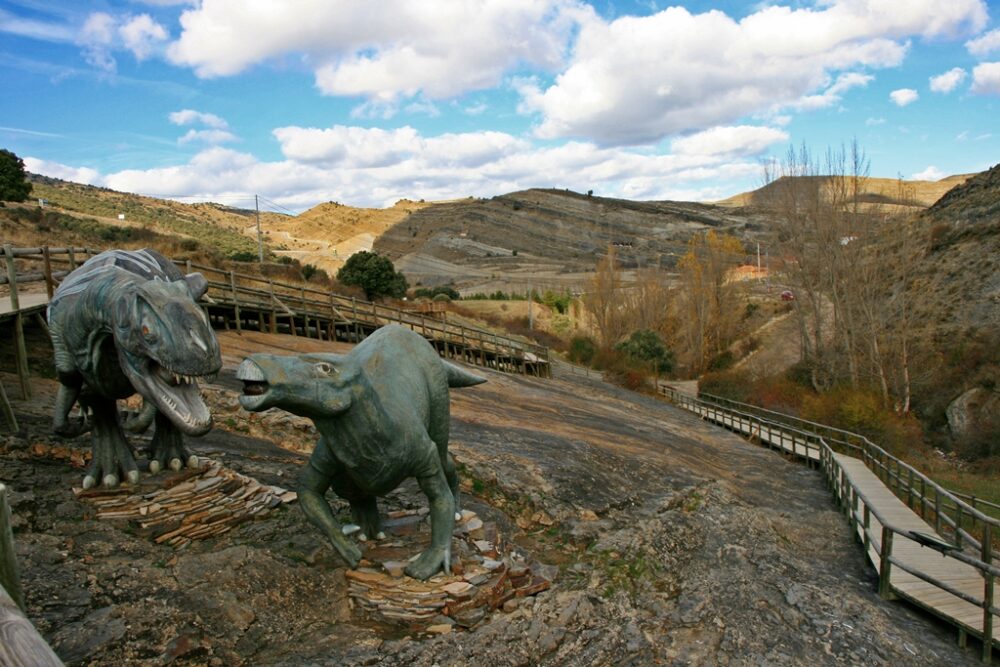
This is one of the most interesting routes, where you can see 506 dinosaur tracks and feel immersed in a prehistoric atmosphere. It is located 400 meters from the city. After crossing the bridge, continue to the right along the path towards the Hermitage. In addition to paw prints, you can also see traces of tail dragging, evidence of a fight between a carnivorous and herbivorous dinosaur, and scratches left during swimming.
Yacimiento de Valdecevillo
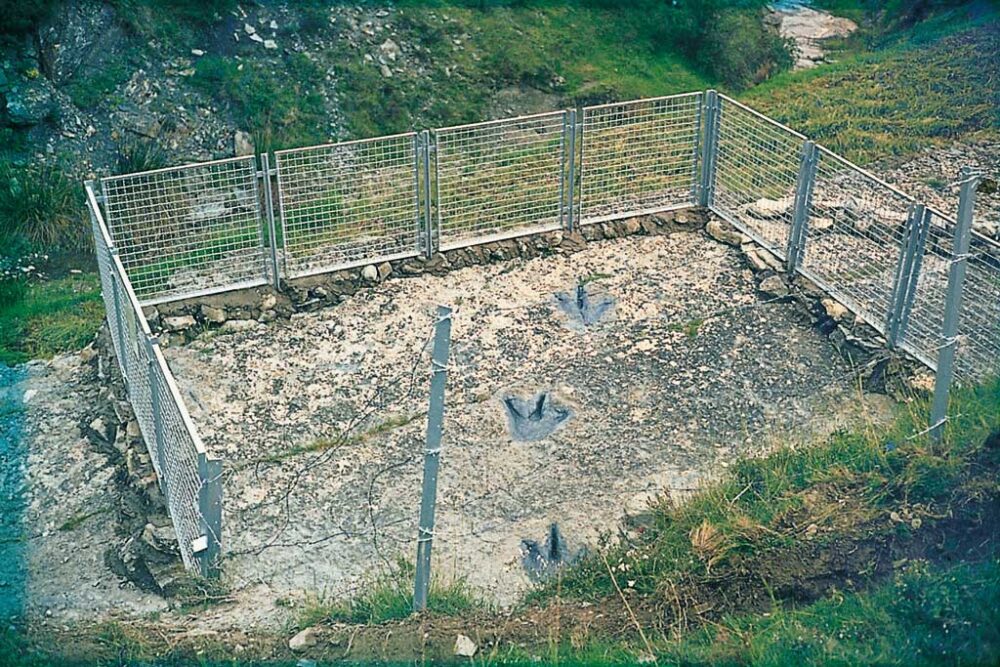
An interesting trail with dinosaur tracks from 7 to 10 meters long — a family of iguanodons, consisting of adults and a baby. There are also ichnites of a sauropod dinosaur that walked on four legs and left 59 tracks.
There are 3D installations with explanations along the trail. It is located 2 kilometers from the bridge over the Sidacos River, following the road leading from Enciso to Cornago. There is parking at the beginning of the route.
Yacimiento de Navalsaz
Along this trail, you will find 138 dinosaur tracks, a significant portion of which are from ornithopods. It is also home to one of the largest iguanodon trails in La Rioja. Scientists have found that the height of the dinosaur’s foot was 5.5 meters — an amazing size. There are explanatory panels along the route.
The miniature village of Navalsaz is located 8 kilometers from Enciso.
Discover Rioja’s wine history at the Vivanco Museum
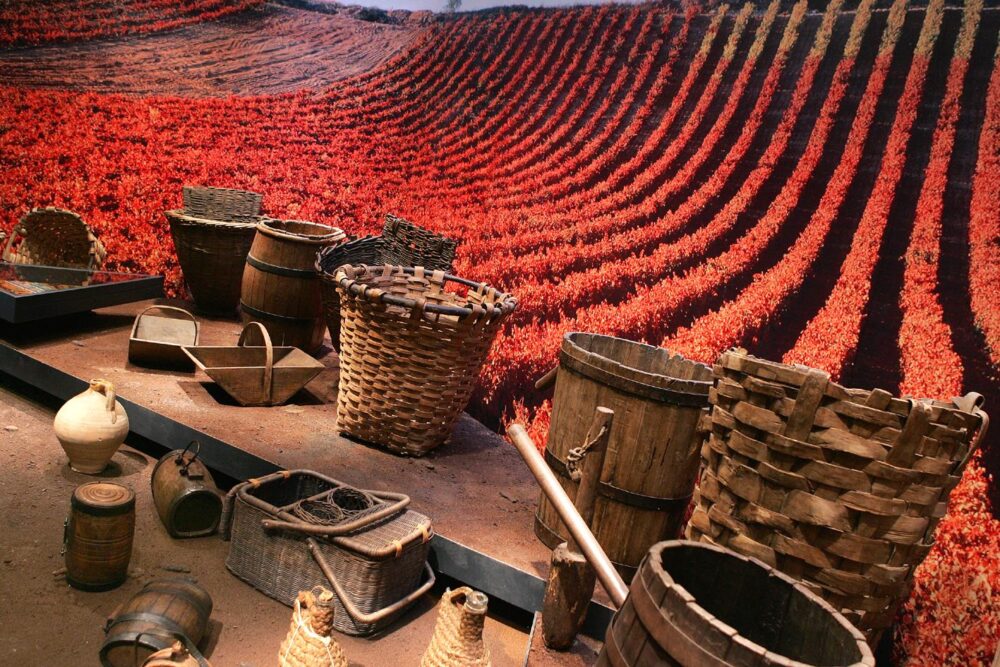
Most likely, you are very well aware that Rioja is famous for its wines, and more than 600 wineries are concentrated in its small territory. One of them has a museum, which we recommend adding to your bucket list. This place is worth visiting and will provide a wonderful experience.
The Vivanco Wine Culture Museum (Museo Vivanco de la Cultura del Vino) is one of the best wine museums in the world. Its vast area of 4,000 m² houses five permanent exhibition halls covering the history of the last 8,000 years of human interaction with the grapevine. Here you will learn about winemaking in ancient times and grape varieties, see beautiful works of art, artifacts, and much more.
Stay at a unique hotel
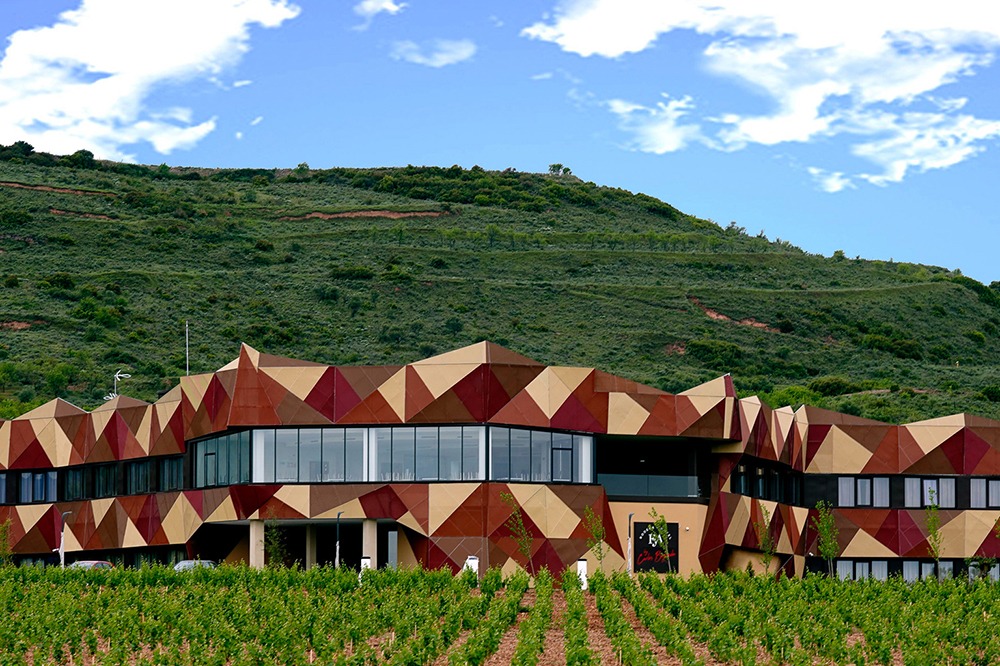
When traveling through La Rioja, you will have to make a stop. We suggest choosing hotels that are deservedly considered one of the best:
- Echaurren Hotel Gastronómico (3 stars). It is located in Escarai and has four restaurants: Echaurren Tradición, El Portal (two Michelin stars), El Cuartito Bistró, and a tapas bar in the fireplace room. There are many scenic spots around the town, and the hotel can rent bicycles for exploring. In winter, people come here to have fun at the Valdescarai ski resort.
- Parador de Santo Domingo de la Calzada (4 stars) is the most famous parador hotel in Rioja. It is perfectly located — 13 kilometers from the ski resort of Valdescarai and 20 kilometers from Haro, which allows you to include the maximum number of locations in your route.
- Bodega Hotel FyA (4 stars). It is located in the city of Navarrete (14 kilometers from Logroño), which is famous for its long tradition of winemaking and pottery and has been declared a historical and artistic site. The hotel’s rooms offer scenic views of the vineyards, and the price includes a visit to the winery and a 45-minute spa session. In addition, the hotel has its own Ceramics Museum, a visit to which will undoubtedly give you a pleasant experience.
Read also: Where to stay in Rioja: the best hotels in the wine region
Count the stork nests in Alfaro
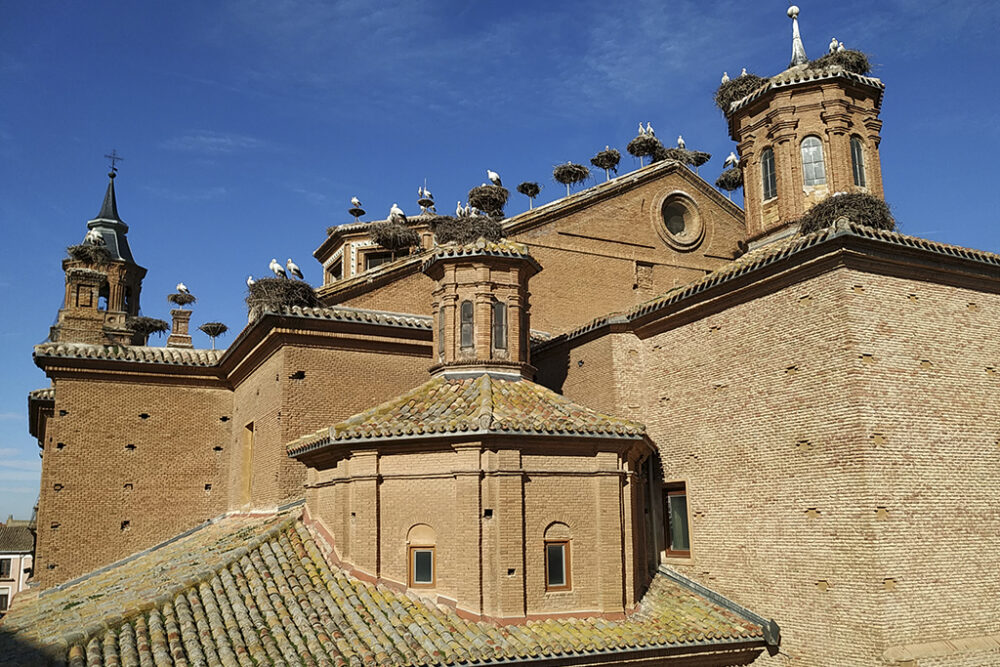
When planning what to do in Rioja, include a visit to the medieval town of Alfaro. Here is the largest temple in the region — the College of San Miguel Arcángel (Colegiata de San Miguel Arcángel). It has been a national monument since 1976 and has breathtakingly beautiful architecture. Its huge roof, with an area of 914 m², was chosen by storks. In the spring, during nesting time, more than 500 individuals live here — the largest colony in Europe. When there is not enough space on the roof, birds begin to build their nests on neighboring buildings. At this time, you can observe an extraordinary revival — storks are active in search of building materials and food for their chicks and fill the sky.
Follow the Way of Saint James pilgrimage route through Rioja
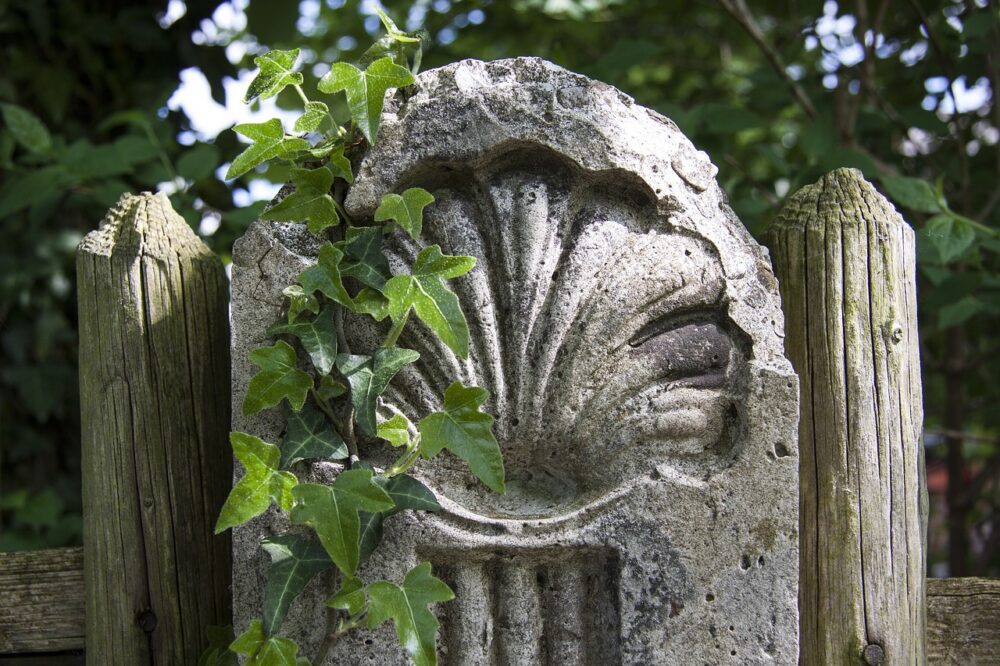
Part of one of the most famous hiking trails in Spain, the Way of Saint James (El Camino de Santiago), passes through La Rioja. It is a collection of routes with a common final destination — the city of Santiago de Compostela in Galicia, where the relics of the Apostle James are located. Believers come here from different parts of Europe — Portugal, France, Poland, Ireland, England and other countries. There are more than 15 routes in total. The most popular ones include: French (camino francés), Original (camino primitivo), Northern (camino del norte), Portuguese (camino portugués), English (camino inglés) and Via de la Plata. They are built in such a way that travelers visit the largest number of holy places on their way.
Saint James is considered the patron saint of pilgrims. During his lifetime, he went on a long journey from the Holy Land to Spain, to preach and convert people to Christianity.
To motivate you to go hiking in La Rioja, Spain, we’ll tell you a little more about it:
- Since 1993, the Way of St. James has been declared a UNESCO World Heritage Site. Believers believe that if you go through it, you will receive forgiveness of sins. But many travelers take this route not only for religious reasons.
- At the end of the journey, pilgrims are presented with a Certificate of Compostela in the Cathedral of Santiago de Compostela filled out in Latin. It testifies to the passage of the Way of St. James route. To receive it at your final destination, you need to present a credencial — a pilgrim’s passport, valid since the Middle Ages. It should contain notes about visiting holy places along the route. For walking pilgrims it is at least 100 kilometers, and for those riding a bicycle — 200 kilometers.
- The symbol of the Way of Saint James is a scallop shell. Its image, along with yellow arrows, can be found on buildings, road surfaces, metal plates, and signs along the entire route.
- Rioja’s Camino de Santiago passes through Logroño, Navaretta, Najera, Azofra, and Santo Domingo de La Casalda. Pilgrims also visit the monasteries of Suso and Yuso in San Millan de la Cogolla, although they are located away from the main route.
- The length of the pedestrian path is 66.4 kilometers. At each point along the Way of San Santiago route in Rioja, you can find inexpensive accommodation in Pilgrims Hostels and hostels, as well as small hotels offering a wide range of services.
Map of the Way of Saint Santiago route in La Rioja
Logrono
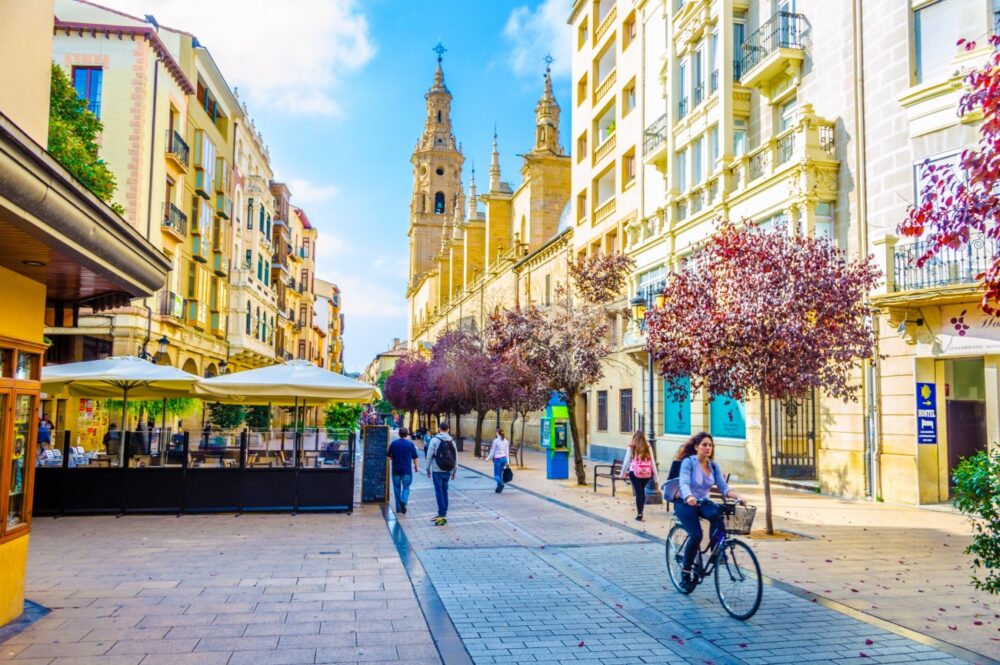
The first city that meets pilgrims in La Rioja on the Way of Saint Santiago is Logrono. Pilgrims enter it from the west, having descended from Mount Cantabria, from where extraordinary views open up.
Their route then goes as follows:
- Stone bridge over the Ebro River. It was built in 1884 and is one of the symbols of the city. And its predecessor, built in the 11th century, still adorns the coat of arms of Logroño. At the beginning of the bridge, there are two fielato — in former times they served as a checkpoint, and now one of them is used as an information point for travelers.
- Ruavieja street. After crossing the bridge, travelers head along Ruavieja Street. Just a few steps away is the Church of Santa María de Palacio and the municipal pilgrims’ hostel, where you can recuperate. The hostel is located in a palace-style building at number 32 Rue Ruavieja. In addition, there is the ancient chapel of Saint Gregory, a must-see for pilgrims.
- Santiago Square. Walking along Barriocepo Street you will arrive at Plaza San Santiago. The church of the same name is located here. It was erected in 844, but in 1500 the building was destroyed by fire, which left only the foundations. The current building was built during the 16th century. Near the church, you can see the ancient Pilgrim fountain, in which tired travelers quenched their thirst. It still works today.
- Puerta del Camino. After Plaza Santiago, pilgrims pass through the Puerta del Camino. They were erected between 1522 and 1534. The gate is decorated with a double-headed eagle — the emblem of the Spanish King Carlos I, as well as two shields of Logroño depicting three heraldic lilies. They were granted by the monarch to the city in 1523 for protection against a siege by French troops two years earlier.
- Logroño Tourist Office. After passing the city gate, you will see the tourist office where you can get a stamp.
This completes the mandatory part of the route. Following the signs, pilgrims can head out of the city and go to La Grajera Park.
La Grajera Park
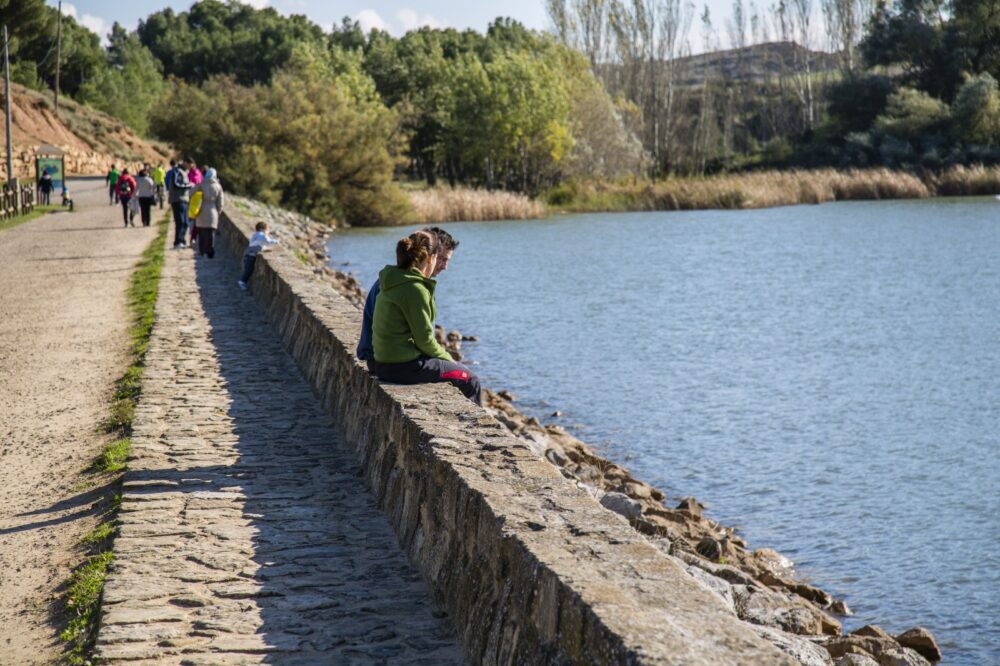
La Grajera Park centres around a reservoir on the River Iregua, built in 1883 to irrigate the orchards south of Logrono. La Grajera is a wonderful place to relax. There are places for eating and replenishing water supplies. In the summer there is a bar-restaurant where you can eat delicious food. The exit from the park is along an asphalt path. Skip the turnoff onto the golf course and begin your descent to enjoy stunning views and leave the welcoming town behind.
Navarrete

The second point on the pilgrims’ route is the city of Navarrete, which is famous not only for the production of wine but also for ceramics. It is only 9 kilometers from Logrono and is located on the Tedeon hill. In the 12th century, the Hospital of San Juan de Acre was built here to receive pilgrims and provide them with the necessary care. In the old part of the city, there are still medieval houses decorated with coats of arms, on which you can see numerous typically Jacobin decorative elements.
In Navarrete, you should go along Calle Mayor Baja to the Church of the Assumption. To leave the city, take Arrabal Street.
Najera
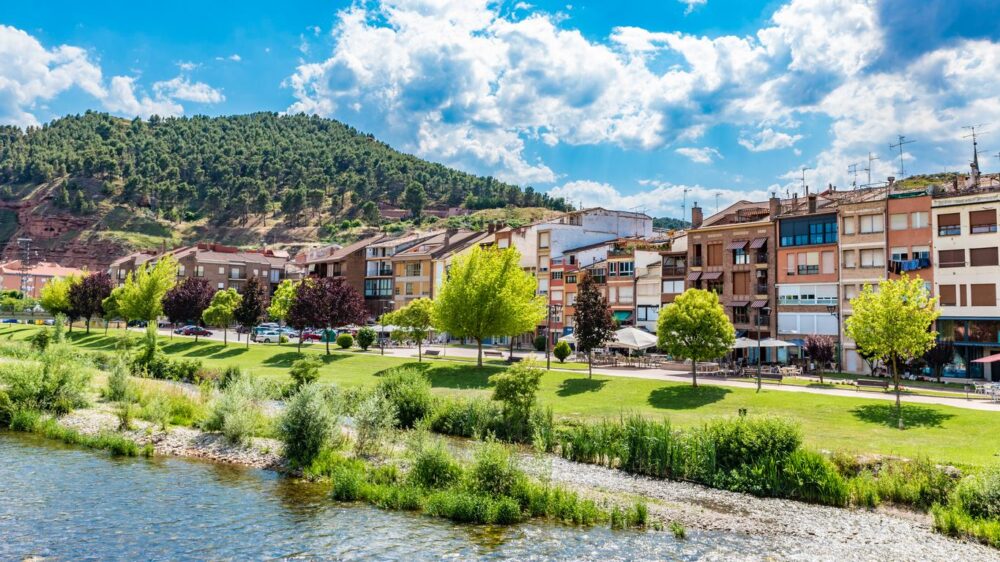
In Najera, the French (in its two versions) and the Jacobin Way of Saint Santiago converge. This ancient city was the capital of the Kingdom of Navarre from 923 to 1076. It is famous for its rich and fascinating history. Currently, it offers a wide range of services for pilgrims on the way — hostels and hotels, excellent restaurants, and recreational facilities.
The main goal of travelers here is the monastery of Santa Maria la Real. It was founded in 1052 but acquired its modern appearance in 1516. Members of the royal family, counts, and dukes of Najera — in total more than 30 historical figures — rest on its territory. In addition, the 16th-century Monastery of St. Helena is worth a visit to the city. Both buildings impress with their beauty and rich decor.
Azofra
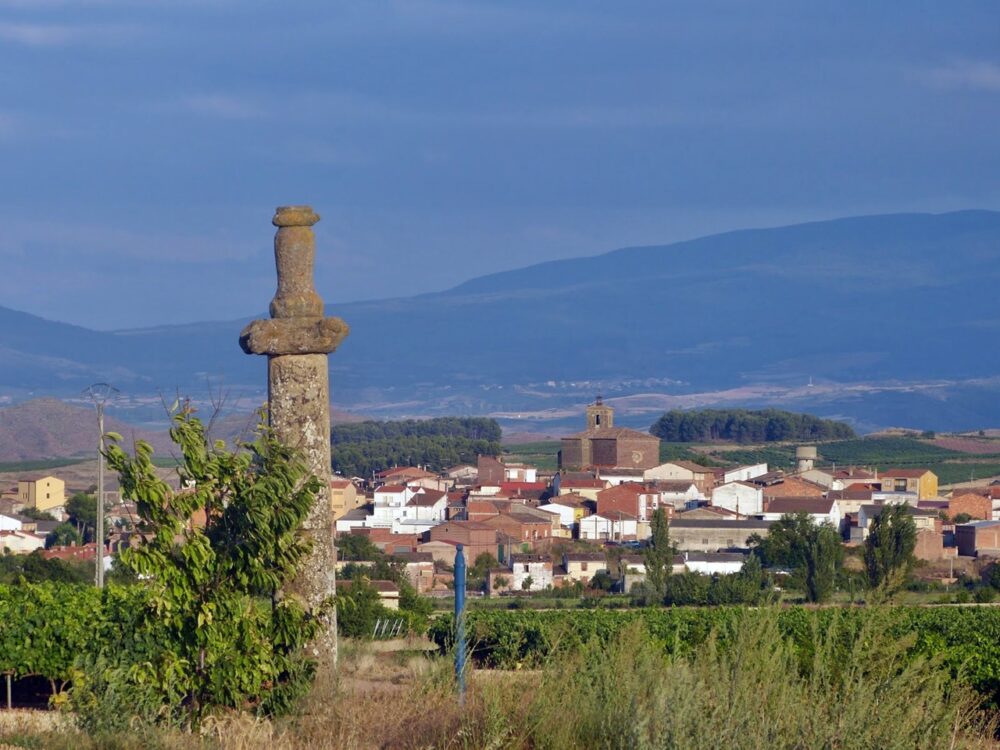
Following signs from Najera, pilgrims will come to Azofra, a small settlement with a thousand-year history, founded by the Romans. The main goal of pilgrims is Iglesia de Nuestra Señora de los Ángeles. This is a beautiful ancient building of the 18th century, decorated with carvings. It crowns the highest point of the village.
Santo Domingo de la Calzada
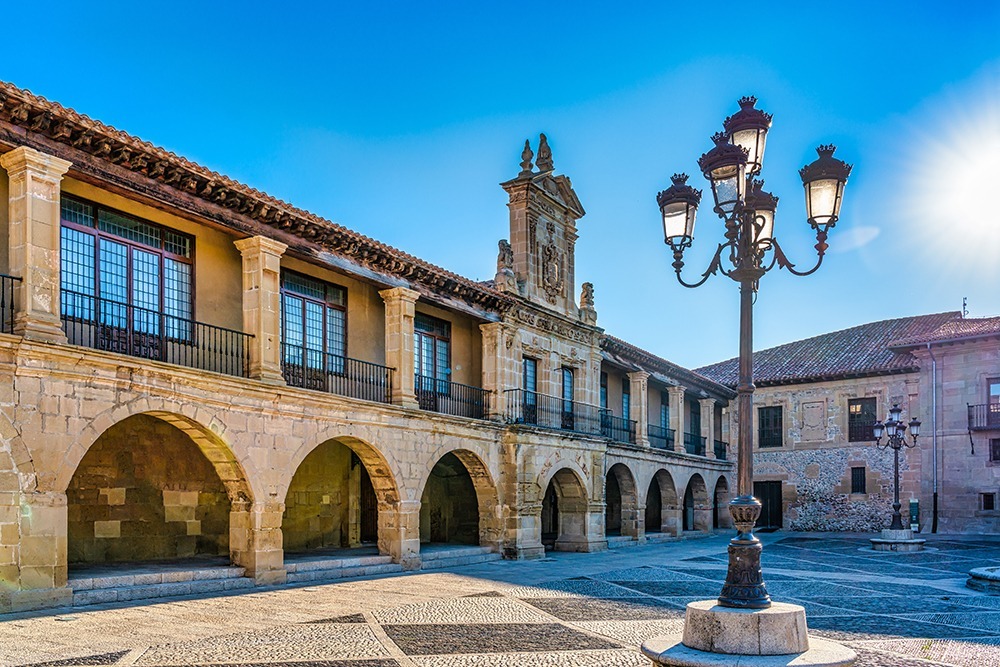
The Church of Santiago in Santo Domingo de la Calzada is one of the significant stops on the Way of Saint James in Rioja. It attracts attention with its ancient history and architecture. Its majestic building rises above the narrow streets of the city, reminiscent of centuries of faith and pilgrimage. This ancient structure began to be erected in the 12th century and received its current appearance after reconstructions in the 14th and 16th centuries. For hundreds of years, these walls provided shelter and overnight accommodation for pilgrims.
Not only the church but also the city of Santo Domingo de la Calzada itself is of interest. There are many beautiful historical buildings here, which are located as hostels for pilgrims.
San Millan de la Cogoglia
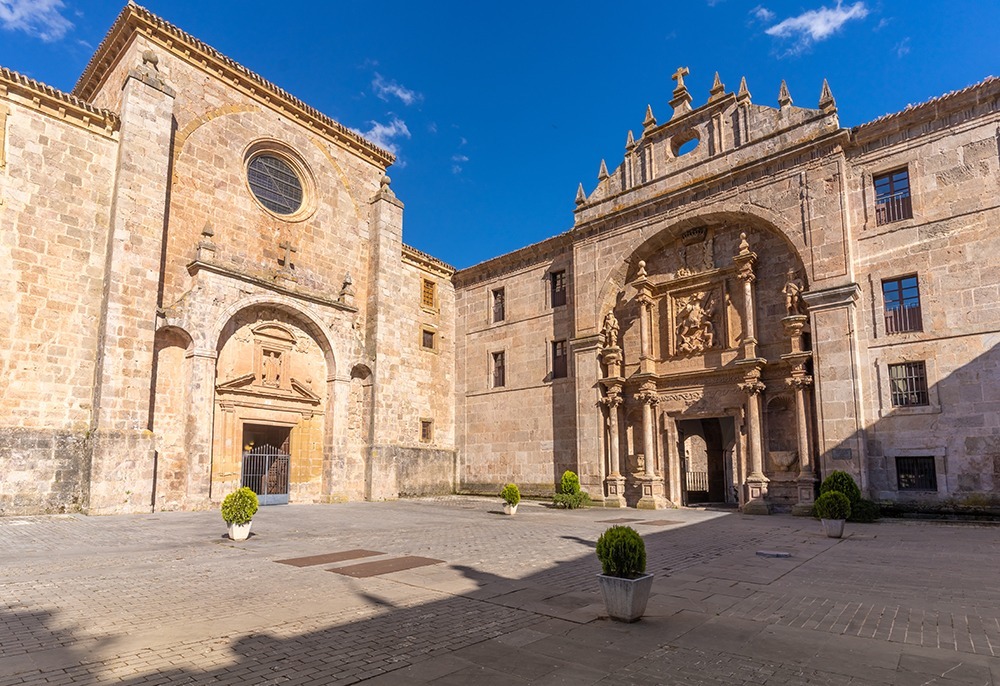
San Millan de la Cogolla is home to the Jacobean Route of the Way of St. James in Rioja. There are two ancient monasteries here — San Millan de Suso and San Millan de Yuso, which are UNESCO World Heritage Sites. They are also considered the birthplace of modern written and spoken Spanish.
The Suso Monastery was founded in the 6th century. It houses a collection of Spain’s most famous medieval manuscripts and codices: Códice Emilianense de los Concilios (992), la Biblia de Quiso (664), and a copy of Apocalipsis, de Beato de Liébana (siglo VIII).
The Yuso Monastery was built in the 11th century to expand the Suso Monastery. It stands out for its impressive size. During the 16th, 17th, and 18th centuries, the monastery underwent several reconstructions and modernizations. As a result of these changes, it acquired features of different architectural styles (mainly Renaissance and Baroque), which are harmoniously combined.
Camino de Santiago is the best route in Rioja if you love hiking and observing historical sites.
Read also: Complete guide to La Rioja — Spain’s wine region
What travelers need to know before traveling to La Rioja
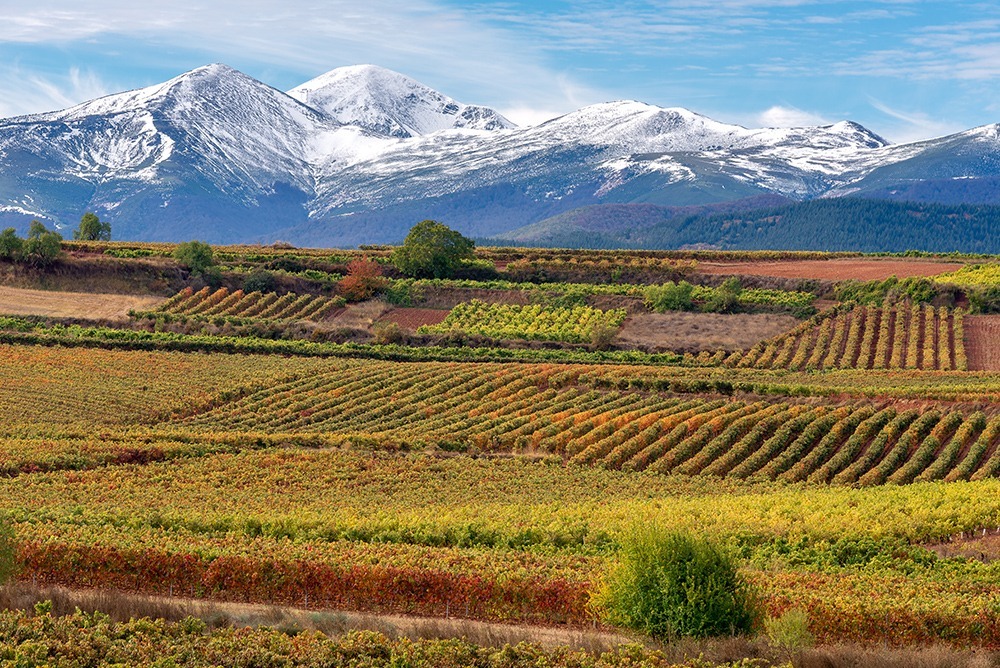
In this section, we will give you useful information to help you prepare for your trip. La Rioja is an inland region in northern Spain. It is crossed by the deepest river of the kingdom (Ebro) and limited by two mountain systems: in the north — the Cantabrian mountains, and in the south — the mountain ranges of the Iberian system. The area is characterized by a picturesque landscape, with everything from fertile river valleys to vineyards located on the hillsides. Nature itself invites travelers to follow its many trails to discover the history, culture, and charming medieval villages.
One of the great things about La Rioja is its comfortable Mediterranean climate with continental influences. It is perfect for hiking and cycling. Summer is usually sunny and hot here, with air temperatures often 30 °C and above, and the peak heat occurs in July and August. Winters are not too cold, about 5-10 °C. Spring and autumn are soft and pleasant, ideal for travel and outdoor activities.
Rioja’s climate is suitable not only for hiking and walking but also for growing grapes, for which it has become famous throughout the world. Its famous wines and wineries are a popular reason for tourists to visit. But the region is also known for its excellent cuisine, tapas bars, and delicious little pintxos.
La Rioja on the map of Spain
Add our article to your bookmarks: it contains a lot of useful information.
If you liked this post, subscribe to our newsletter and Telegram.
Also join us on Pinterest to keep up to date with the latest news.
